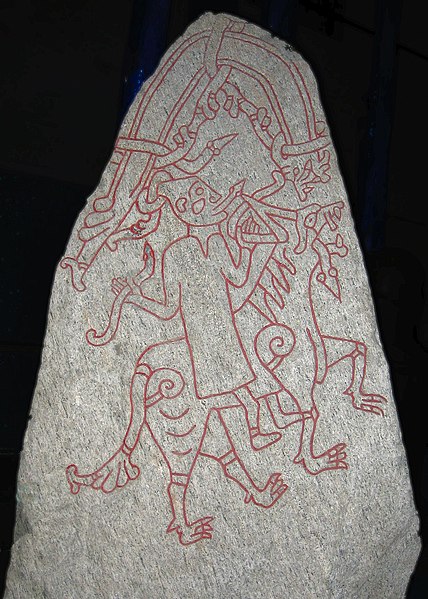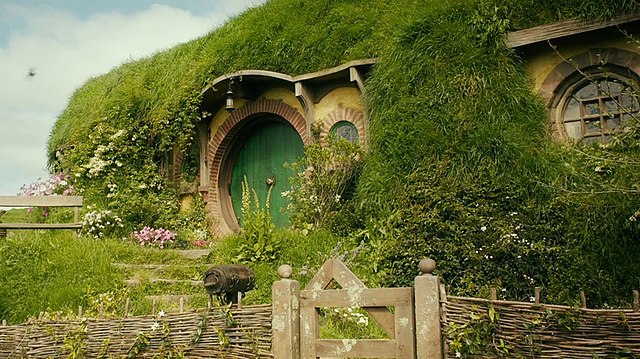In the philologist and fantasy author J. R. R. Tolkien's Middle-earth fiction, a warg is a particularly large and evil kind of wolf that could be ridden by orcs. He derived the name and characteristics of his wargs by combining meanings and myths from Old Norse and Old English. In Norse mythology, a vargr is a wolf, especially the wolf Fenrir that destroyed the god Odin in the battle of Ragnarök, and the wolves Sköll and Hati, Fenrir's children, who perpetually chase the Sun and Moon. In Old English, a wearh is an outcast who may be strangled to death.
The jötunn Hyrrokin riding a wolf, on an image stone from the Hunnestad Monument, constructed in 985–1035 AD
Wargs being used as cavalry mounts, as depicted in Peter Jackson's The Two Towers, battling the Riders of Rohan.
Middle-earth is the setting of much of the English writer J. R. R. Tolkien's fantasy. The term is equivalent to the Miðgarðr of Norse mythology and Middangeard in Old English works, including Beowulf. Middle-earth is the human-inhabited world, that is, the central continent of the Earth, in Tolkien's imagined mythological past. Tolkien's most widely read works, The Hobbit and The Lord of the Rings, are set entirely in Middle-earth. "Middle-earth" has also become a short-hand term for Tolkien's legendarium, his large body of fantasy writings, and for the entirety of his fictional world.
A detail of Middle-earth in one of Peter Jackson's film sets
Medieval Christian cosmology: heaven above, earth in the middle, hell below. Vank Cathedral, Isfahan.




